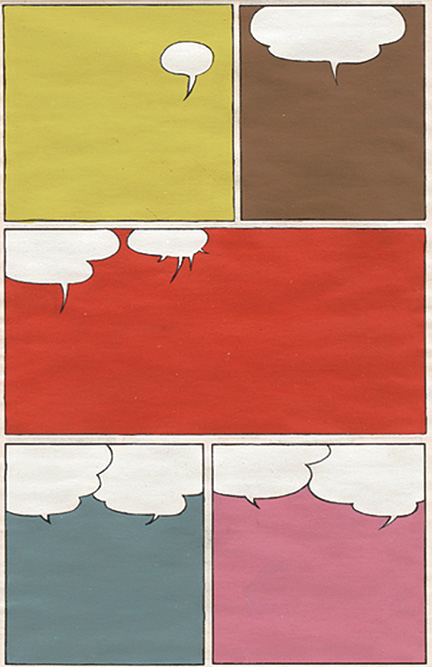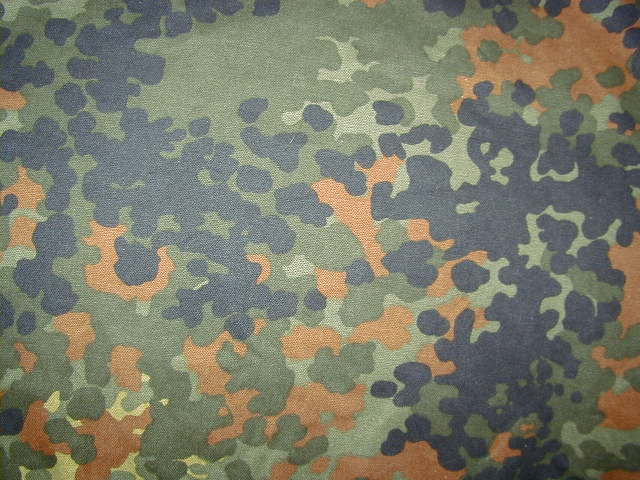Monday, May 9, 2011
This is fundamental. It changes everything.
I recently discovered the ideas of Vittorio Guidano, who from what I can gather was a Chilean psychologist who wrote on an approach to cognitive therapy he called "post-rationalism" (there is very little information about him or his writings in English; I have found one decently translated interview and one essay, both intended to provide an easy-to-understand summary of post-rationalism). He is someone I wish I knew about 4 months ago; the concepts of post-rationalism are really relevant to what I wanted to explore both in my thesis and in general. It maintains that logical, rational thought is only a portion of the ways humans can and do interact with the world, and there are plenty of legitimate other ways to experience the world besides through rationality (for example, emotionally). The interview is great, it talks about self-contained order, the world as one perceived by non-impartial entities, and domains in which logic isn't applicable. I'm going to continue to try to find books or anything in English, though he also makes me want to speak Spanish.
Tuesday, May 3, 2011
A good solid net for me, too
I haven't blogged about a singular artist in a while, and Javier Pinon's been on my list of artists to write about too long as it is. First of all, collage is something I have wanted to work with for a really long time but never have had much luck with; a lot of good displacement going on in it. But Pinon not only fulfills my collage lust, but has a great offbeat, folky, neo-neo-classical style. He turns classic mythological tales into psychedelic westerns, or maybe the other way around, and creates great scenes of weird human-animal hybrids engaging in weird death rituals. He's one of a too-small pool of artists who make me really really want to make shit; his colors and sources and compositions are out of this world. Is Pinon's work more style than substance? Maybe. But it's still a wellspring of ideas and feel-goodness. Also, the size of these really cracks me up, but that's an inherent limitation of collage I suppose. Which I approve of.
The Sacred Grove, Javier Pinon, 2010, collage, 16"x26", from his website.

Hercules and the Hydra, Javier Pinon, 2007, collage, 11.5"x8", also from his website.
The Sacred Grove, Javier Pinon, 2010, collage, 16"x26", from his website.

Hercules and the Hydra, Javier Pinon, 2007, collage, 11.5"x8", also from his website.
Tuesday, April 12, 2011
Can do anything
 Roy Lichtenstein, and Pop artists in general, use a vocabulary which is both very culturally dependent but very universal within that frame. Bombshells (of both the exploding and blonde types), brooding dudes, primaries and flesh tones, halftone patterns, melodrama and speech bubbles are used... I don't really want to talk about him as critiquing the art world, mass entertainment and so on. Instead, I'm going to focus on my favorite element, the speech bubble and text. I imagine what the images would be without the contextualizing words; the inner turmoils and angst become externalized and smack ya. Text in artwork is a kind of funny paradox; it conveys more complex and subtle emotions but in a very direct way. Speech bubbles have a great, specific purpose, and when are put in different context do crazy things. Rivane Neuenschwander is an artist from Brazil who removed the context of a nationalistic Brazilian comic strip from the speech bubbles, leaving abstracted forms and colors. Text that is meant to be read as coming from some entity within a piece of art is a lot more interesting; there are implications of what the artist knows versus what the character knows versus what the viewer knows.
Roy Lichtenstein, and Pop artists in general, use a vocabulary which is both very culturally dependent but very universal within that frame. Bombshells (of both the exploding and blonde types), brooding dudes, primaries and flesh tones, halftone patterns, melodrama and speech bubbles are used... I don't really want to talk about him as critiquing the art world, mass entertainment and so on. Instead, I'm going to focus on my favorite element, the speech bubble and text. I imagine what the images would be without the contextualizing words; the inner turmoils and angst become externalized and smack ya. Text in artwork is a kind of funny paradox; it conveys more complex and subtle emotions but in a very direct way. Speech bubbles have a great, specific purpose, and when are put in different context do crazy things. Rivane Neuenschwander is an artist from Brazil who removed the context of a nationalistic Brazilian comic strip from the speech bubbles, leaving abstracted forms and colors. Text that is meant to be read as coming from some entity within a piece of art is a lot more interesting; there are implications of what the artist knows versus what the character knows versus what the viewer knows.
Top: "Ohhh... Alright" by Roy Lichtenstein, 1964. From a blog called the Swipe Files, which looks at similarities between elements in cartoons, comics and graphic novels through the issue of plagiarism, homage and reappropriation.
Left: "Zé Carioca no. 4, A Volta de Zé Carioca [The Return of Zé Carioca] (1960)" by Rivane Neuenschwander, 2004. From an article in This Week in New York.
Thursday, April 7, 2011
Please look above
I've been thinking about camouflage patterning, particularly the use of camouflage by humans. The defining characteristics are interesting, especially considering what appears (to me) to be common perspectives of such. One, the specific aspects of camouflage are quite different from those in other patterns. It inherently doesn't have a definable overall structure, because then what's the point, and it does typically have a definable color scheme, because that is the point. Traditional fashion patterning can be executed in any palette. What interests me most is perhaps the necessity of a particular environment for the patterning to be effective, as well as knowledge of what viewers (the audience) knows. Total awareness of the surrounding, unpredictable yet a pattern... Site specific? It's clear why it's not used in much or any ornamentation, but it also seems to have a lot of substance (and I'm also interested in removing the militaristic connotations, sort of. I was totally into military history as a kid and running around in the woods, still, so I can live with it.)
The question then becomes, what are effective and necessary means of incorporating the elements of camouflage into what I'm making? As I said, site-specific artwork is an obvious answer but doesn't interest me much. It does rely totally on the illusory and making one thing look like another. Mixed media, or something. In the meantime, and for your consideration, here's one of my favorite patterns (flecktarn, from Germany).

The question then becomes, what are effective and necessary means of incorporating the elements of camouflage into what I'm making? As I said, site-specific artwork is an obvious answer but doesn't interest me much. It does rely totally on the illusory and making one thing look like another. Mixed media, or something. In the meantime, and for your consideration, here's one of my favorite patterns (flecktarn, from Germany).

From wikipedia.
Saturday, April 2, 2011
I am separate
Before I could work through my list of ideas I thought would be useful to do so I could best communicate about my work, something came up (my show). I'm completely happy with how it went; thanks to everyone who came and to Jenn and Courtney and Liz. Today it hit me mid-shave that most of my time this semester I have devoted to last night, for better or worse (and a case could be made either way). All I know is for the rest of the semester I'm not using any more damn cream heavyweight paper. Probably pencil work drawn from real-life referents. Maybe some more painting, I wonder how much I can apply what I learned over the past several months back into painting, which I feel pretty incompetent with still.
Sunday, March 13, 2011
It's an idiom for a reason, but I'm not going to say it.
A point that I've found myself returning to many times so this can be short and sweet I hope. My drawings are of entireties, an entire field, flock, or texture. There isn't anything beyond the page, so I don't want to imply that there is, this is a given. Michael Frank referred to me illustrating the 'whole' as a power play, which I found amusing and true. All this is mirrored in how I want them to be viewed as a singular composition first, then perhaps the individual elements inspected. The individual elements, by the way, also have to fit within the part/whole issue. They themselves are made of sub-particles, and are sub-particles themselves within the drawing - it's all very recursive. Anything else I say is probably a retread of my previous posts, a good sign: life (or art) imitating art (or life)?
Wednesday, March 9, 2011
Off in the distance
I don't want to be defensive, though this post is and probably should not be. My drawings certainly are repetitive, and I understand how they one might interpret them as 'obsessive,' but I don't look at them as either. I do not find them repetitive in execution: each iteration on the page is distinct from the ones prior, an act of active forgetting, each an attempt to match the ideal which I have constructed in my head. The process of placing the first drawing on the paper is no different than placing the last.
These are all also the basis for why my drawings are not obsessive - I let go of what I have done previously with ease, I don't let past errors influence my current task. Making more drawings does not add more meaning (meaning is necessitated by a full page taken as a unit). Obsession is rooted in the past, these drawings require the present. My current plan of display will hopefully allow them to be viewed primarily on a holistic scale. Viewing will not jump from one object in a drawing to another to another to another in the repetitive spirit and will shift instead to the drawings as a whole, a creation which is very much not repetitive (see post about patterns).
These are all also the basis for why my drawings are not obsessive - I let go of what I have done previously with ease, I don't let past errors influence my current task. Making more drawings does not add more meaning (meaning is necessitated by a full page taken as a unit). Obsession is rooted in the past, these drawings require the present. My current plan of display will hopefully allow them to be viewed primarily on a holistic scale. Viewing will not jump from one object in a drawing to another to another to another in the repetitive spirit and will shift instead to the drawings as a whole, a creation which is very much not repetitive (see post about patterns).
Subscribe to:
Posts (Atom)

